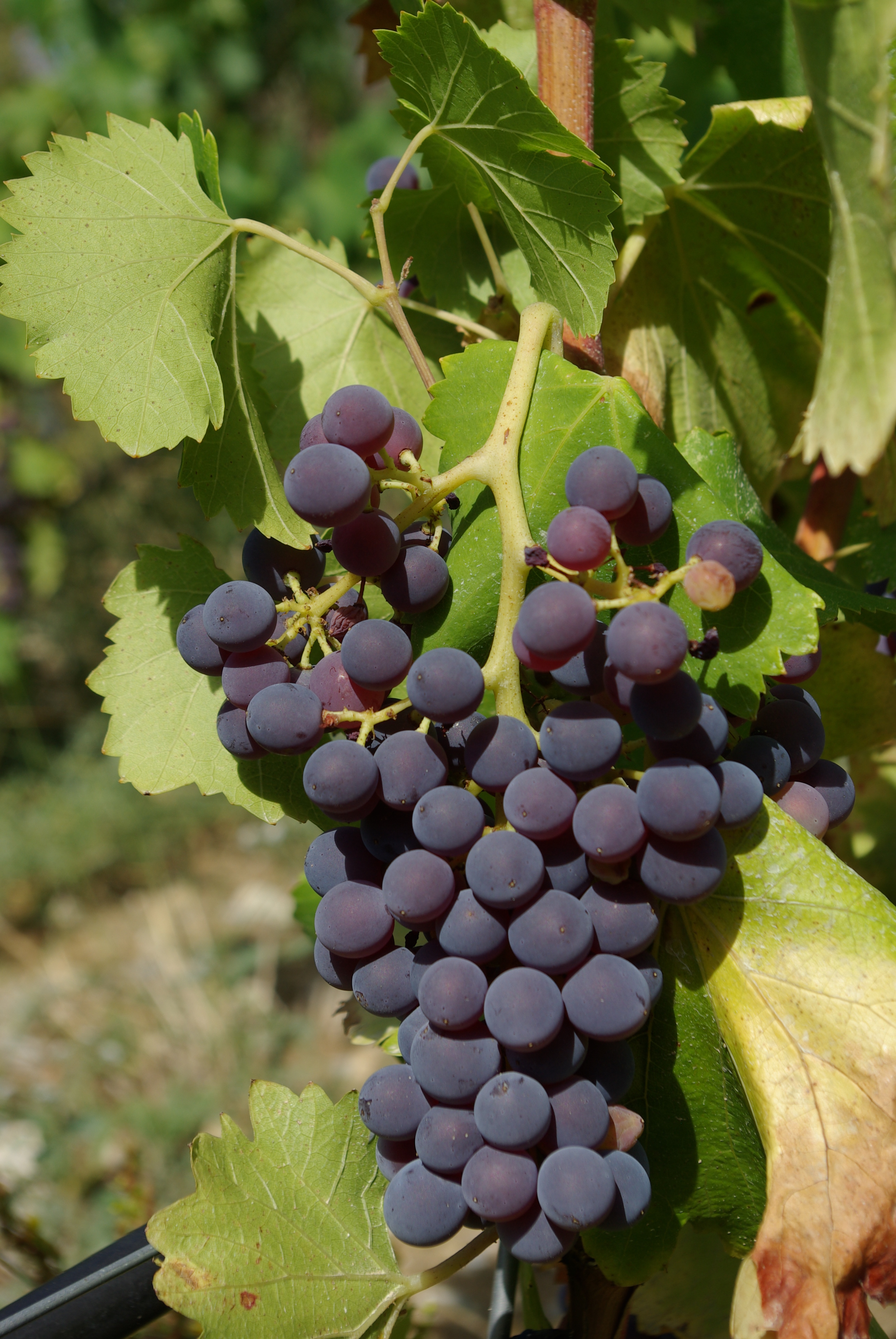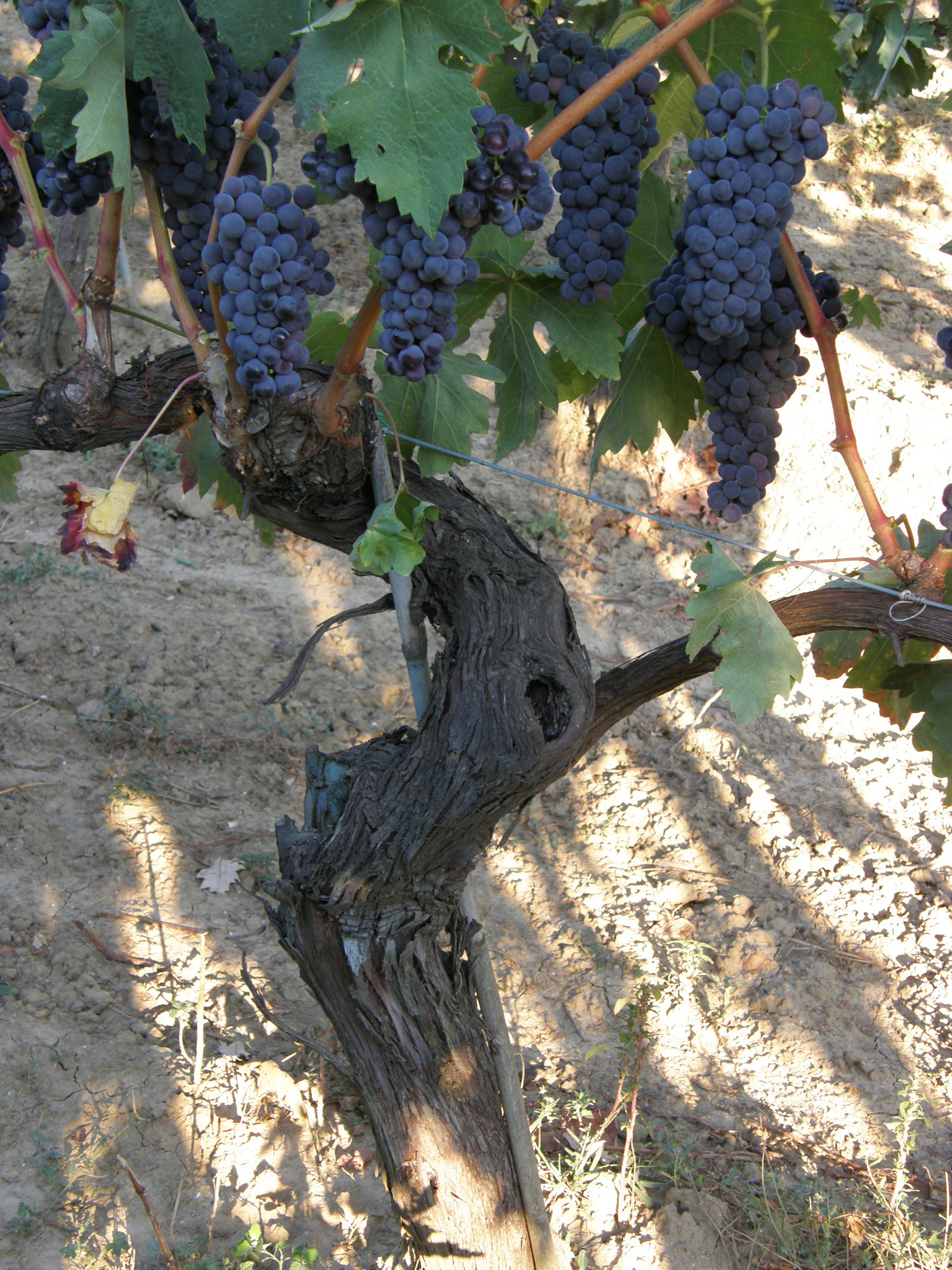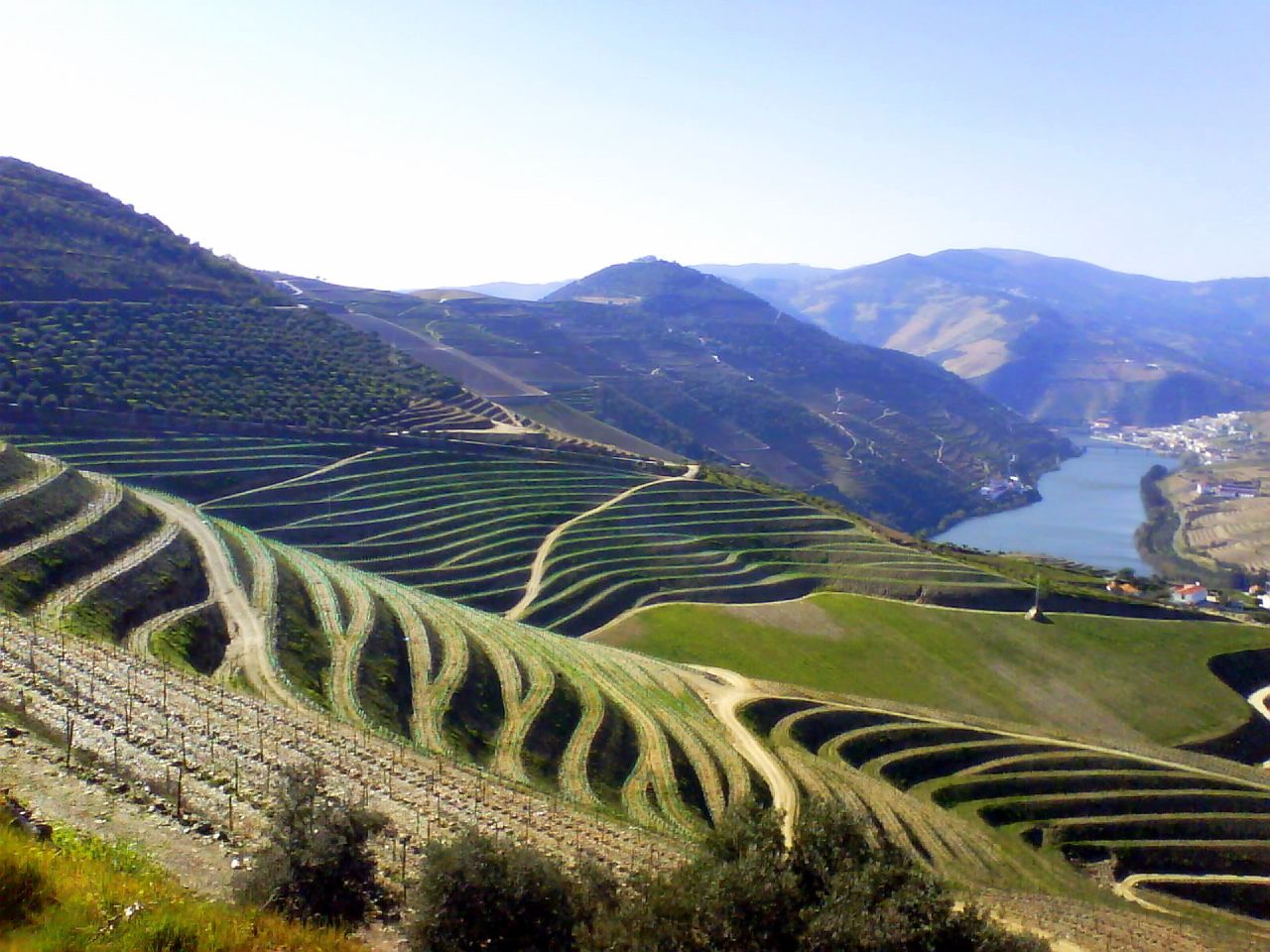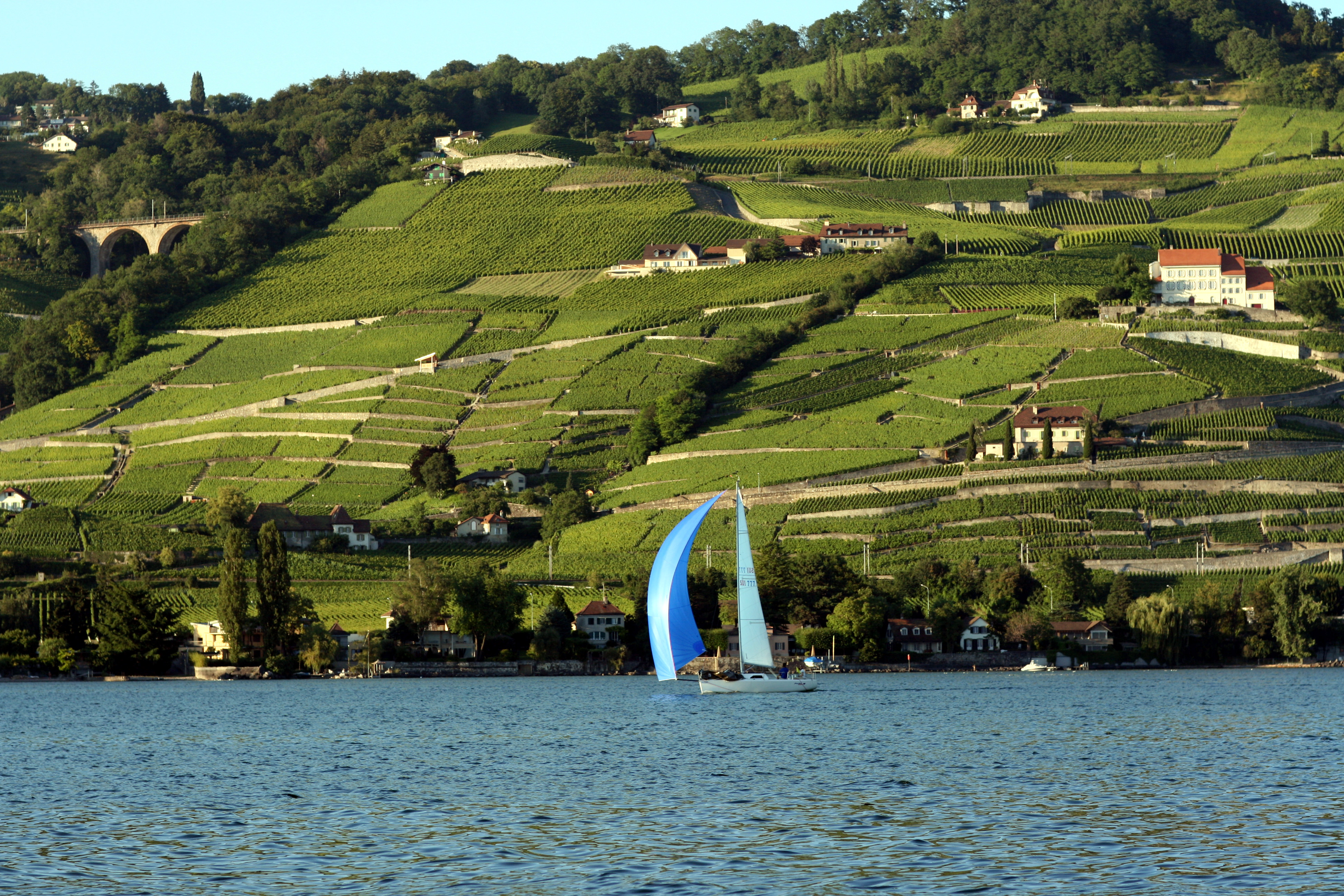|
Cigales (DO)
Cigales is a Spanish Denominación de Origen Protegida (DOP) for wines located to the north of Valladolid (Castile and León, Spain) along both banks of the River Pisuerga. It includes several municipalities, including Valladolid itself, Dueñas, Cabezón de Pisuerga, Cigales, Corcos del Valle, Cubillas de Santa Marta, Fuensaldaña, Mucientes, Quintanilla de Trigueros, San Martín de Valvení, Trigueros del Valle and Valoria la Buena. The DO has an extension of 574 km² and is at an altitude of 750 m above sea level. It is a relatively recent DO, having been created in 1991. History The first known inhabitants of this area were the Vaccaei, who were subjugated by the ancient Romans in the 2nd century BC. As in the rest of the peninsula, the Romans introduced vines along with other agricultural innovations. The number of vineyards increased significantly during the Middle Ages due to the influence of the monasteries. Mary of Austria, Queen of Hungary, died in Ciga ... [...More Info...] [...Related Items...] OR: [Wikipedia] [Google] [Baidu] |
Province Of Valladolid
Valladolid () is a Provinces of Spain, province of northwest Spain, in the central part of the Autonomous communities of Spain, autonomous community of Castile-Leon, Castile and León. It has a population of 520,716 people in a total of 225 municipalities, an area of and a population density of 64.19 people per km2. The capital is the city of Valladolid. It is bordered by the provinces of Zamora (province), Zamora, León (province), León, Palencia (province), Palencia, Burgos (province), Burgos, Segovia (province), Segovia, Ávila (province), Ávila, and Salamanca (province), Salamanca. It is thus the only Spanish province surrounded entirely by other provinces of the same autonomous community. It is the only peninsular province which has no mountains. Because the extensive plain on which the province lies is strategically important to overland transport, it is a major communications hub. From a national point of view it connects Madrid with the north of Spain, from Vigo in Gali ... [...More Info...] [...Related Items...] OR: [Wikipedia] [Google] [Baidu] |
Vaccaei
The Vaccaei or Vaccei were a pre-Roman Celtic people of Spain, who inhabited the sedimentary plains of the central Duero valley, in the Meseta Central of northern Hispania (specifically in Castile and León). Their capital was ''Intercatia'' in Paredes de Nava. Origins Also designated Vaccaenas in the ancient sources, the Vaccaei were probably largely of Celtic descent and probably related to the Celtiberians. Their name may be derived from the Celtic word ', meaning a ''slayer'', since they were celebrated fighters. However, some scholars have reasoned that the name ‘Vaccaei’ may actually derive from ‘Aued-Ceia’, a contraction of ''Ceia'', the presumed ancient name of the modern river Cea, prefixed by the Indo-European root ''*aued-'' (water). They often acted in concert with their neighbours, the Celtiberi, suggesting that they may have been part of the Celtiberian peoples. They had a strict egalitarian society practising land reform and communal food distribution. Thi ... [...More Info...] [...Related Items...] OR: [Wikipedia] [Google] [Baidu] |
Syrah
Syrah (), also known as Shiraz, is a dark-skinned grape variety grown throughout the world and used primarily to produce red wine. In 1999, Syrah was found to be the offspring of two obscure grapes from southeastern France, Dureza and Mondeuse Blanche. Syrah should not be confused with Petite Sirah, a cross of Syrah with Peloursin dating from 1880. The style and flavor profile of wines made from Syrah are influenced by the climate where the grapes are grown. In moderate climates (such as the northern Rhone Valley and parts of the Walla Walla AVA in Washington State), they tend to produce medium to full-bodied wines with medium-plus to high levels of tannins and notes of blackberry, mint and black pepper. In hot climates (such as Crete, and the Barossa Valley and McLaren Vale regions of Australia), Syrah is more consistently full-bodied with softer tannin, jammier fruit and spice notes of licorice, anise and earthy leather. In many regions the acidity and tannin levels of Syra ... [...More Info...] [...Related Items...] OR: [Wikipedia] [Google] [Baidu] |
Cabernet Sauvignon
Cabernet Sauvignon () is one of the world's most widely recognized red wine grape varieties. It is grown in nearly every major wine producing country among a diverse spectrum of climates from Australia and British Columbia, Canada to Lebanon's Beqaa Valley. Cabernet Sauvignon became internationally recognized through its prominence in Bordeaux wines, where it is often blended with Merlot and Cabernet Franc. From France and Spain, the grape spread across Europe and to the New World where it found new homes in places like California's Santa Cruz Mountains, Paso Robles, Napa Valley, New Zealand's Hawke's Bay, South Africa's Stellenbosch region, Australia's Margaret River, McLaren Vale and Coonawarra regions, and Chile's Maipo Valley and Colchagua. For most of the 20th century, it was the world's most widely planted premium red wine grape until it was surpassed by Merlot in the 1990s. However, by 2015, Cabernet Sauvignon had once again become the most widely planted wine gra ... [...More Info...] [...Related Items...] OR: [Wikipedia] [Google] [Baidu] |
Garnacha Tinta
Grenache () or Garnacha () is one of the most widely planted red wine grape varieties in the world. Niels Lillelund: ''Rhône-Vinene'' p. 25, JP Bøger – JP/Politikens Forlagshus A/S, 2004. . It ripens late, so it needs hot, dry conditions such as those found in Spain, where the grape most likely originated. It is also grown in the Italian island of Sardinia, the south of France, Australia, and California's Monterey AVA and San Joaquin Valley. It is generally spicy, berry-flavored and soft on the palate and produces wine with a relatively high alcohol content, but it needs careful control of yields for best results. Characteristic flavor profiles on Grenache include red fruit flavors (raspberry and strawberry) with a subtle, white pepper spice note. Grenache wines are highly prone to oxidation, with even young examples having the potential to show browning (or "bricking") coloration that can be noticed around the rim when evaluating the wine at an angle in the glass. As ... [...More Info...] [...Related Items...] OR: [Wikipedia] [Google] [Baidu] |
Tempranillo
Tempranillo (also known as Ull de Llebre, Cencibel, Tinto Fino and Tinta del Pais in Spain, Aragonez or Tinta Roriz in Portugal, and several other synonyms elsewhere) is a black grape variety widely grown to make full-bodied red wines in its native Spain. Its name is the diminutive of the Spanish ''temprano'' ("early"), a reference to the fact that it ripens several weeks earlier than most Spanish red grapes. Tempranillo has been grown on the Iberian Peninsula since the time of Phoenician settlements. It is the main grape used in Rioja, and is often referred to as Spain's noble grape. The grape has been planted throughout the globe's wine regions. In 2015, Tempranillo was the fourth most widely planted wine grape variety worldwide with under vine, of which 87% was in Spain where it is the most planted red grape variety. Unlike more aromatic red wine varieties like Cabernet Sauvignon, Sangiovese and Pinot noir, Tempranillo has a relatively neutral profile so it is often b ... [...More Info...] [...Related Items...] OR: [Wikipedia] [Google] [Baidu] |
Rosé
A rosé () is a type of wine that incorporates some of the color from the grape skins, but not enough to qualify it as a red wine. It may be the oldest known type of wine, as it is the most straightforward to make with the skin contact method. The pink color can range from a pale "onionskin" orange to a vivid near-purple, depending on the grape varieties used and winemaking techniques. Usually, the wine is labelled ''rosé'' in French, Portuguese, and English-speaking countries, rosado in Spanish, or rosato in Italian. There are three major ways to produce rosé wine: skin contact, ''saignée'', and blending. Rosé wines can be made still, semi-sparkling or sparkling and with a wide range of sweetness levels from highly dry Provençal rosé to sweet White Zinfandels and blushes. Rosé wines are made from a wide variety of grapes and can be found all around the globe.J. Robinson (ed) ''"The Oxford Companion to Wine"'' Third Edition pg 593 Oxford University Press 2006 O. C ... [...More Info...] [...Related Items...] OR: [Wikipedia] [Google] [Baidu] |
Claret
Bordeaux wine ( oc, vin de Bordèu, french: vin de Bordeaux) is produced in the Bordeaux region of southwest France, around the city of Bordeaux, on the Garonne River. To the north of the city the Dordogne River joins the Garonne forming the broad estuary called the Gironde; the Gironde department, with a total vineyard area of over 120,000 hectares, is the largest wine growing area in France. Average vintages produce over 700 million bottles of wine, ranging from large quantities of everyday table wine, to some of the most expensive and prestigious wines in the world. The vast majority of wine produced in Bordeaux is red (sometimes called "claret" in Britain), with sweet white wines (most notably Sauternes), dry whites, and (in much smaller quantities) rosé and sparkling wines (Crémant de Bordeaux) collectively making up the remainder. Bordeaux wine is made by more than 8,500 producers or ''châteaux''. There are 54 appellations of Bordeaux wine. History Viticulture ... [...More Info...] [...Related Items...] OR: [Wikipedia] [Google] [Baidu] |
Rueda (DO)
Rueda is a Spanish Denominación de Origen Protegida (DOP) for wines located in the Community of Castile and León. It comprises 72 municipalities, of which 53 are in the province of Valladolid, 17 are in the north of the province of Segovia, and 2 are in the north of the province of Ávila."Denominación de Origen Rueda" webpage of . Retrieved March 7, 2008. It is one of Spain's leading wine regions, and is known primarily for its white wines based on the grape. History [...More Info...] [...Related Items...] OR: [Wikipedia] [Google] [Baidu] |
Toro, Zamora
Toro is a town and municipality in the province of Zamora, part of the autonomous community of Castile and León, Spain. It is located on a fertile high plain, northwest of Madrid at an elevation of . Toro is known as a center of Mudéjar art and as a wine-producing region. It is located on the Duero River roughly halfway between Zamora, the provincial capital and Tordesillas in the province of Valladolid. The four-lane freeway (autovía) A-11 now connects these two cities and passes just north of Toro. Highway N122 passes through the town. The distance to Madrid by highway is . Distances to other cities are: to Zamora, to Valladolid and to Salamanca. History Antiquity Toro is an ancient town, possibly the Arbukala of the Vaccai tribe which was conquered by Hannibal in 220 BC but survived to trouble the Romans. The Roman town was called Albucella. The modern name may derive from the bull totem of that Celtiberian people. In the 8th century it was conquered by the ... [...More Info...] [...Related Items...] OR: [Wikipedia] [Google] [Baidu] |
Maritime Influence (wine)
In viticulture, the climates of wine regions are categorised based on the overall characteristics of the area's climate during the growing season. While variations in macroclimate are acknowledged, the climates of most wine regions are categorised (somewhat loosely based on the Köppen climate classification) as being part of a Mediterranean (for example Tuscany), maritime (ex: Bordeaux) or continental climate (ex: Columbia ValleyA. Mumma 'The Washington wine difference: it's in the vineyard'' Wines & Vines, November 2005). The majority of the world's premium wine production takes place in one of these three climate categories in locations between the 30th parallel and 50th parallel in both the northern and southern hemisphere.T. Stevenson ''"The Sotheby's Wine Encyclopedia"'' pg 14-15 Dorling Kindersley 2005 While viticulture does exist in some tropical climates, most notably Brazil, the amount of quality wine production in those areas is so small that the climate effect has no ... [...More Info...] [...Related Items...] OR: [Wikipedia] [Google] [Baidu] |
Continental Climate (wine)
In viticulture, the climates of wine regions are categorised based on the overall characteristics of the area's climate during the growing season. While variations in macroclimate are acknowledged, the climates of most wine regions are categorised (somewhat loosely based on the Köppen climate classification) as being part of a Mediterranean (for example Tuscany), maritime (ex: Bordeaux) or continental climate (ex: Columbia ValleyA. Mumma 'The Washington wine difference: it's in the vineyard'' Wines & Vines, November 2005). The majority of the world's premium wine production takes place in one of these three climate categories in locations between the 30th parallel and 50th parallel in both the northern and southern hemisphere.T. Stevenson ''"The Sotheby's Wine Encyclopedia"'' pg 14-15 Dorling Kindersley 2005 While viticulture does exist in some tropical climates, most notably Brazil, the amount of quality wine production in those areas is so small that the climate effect has n ... [...More Info...] [...Related Items...] OR: [Wikipedia] [Google] [Baidu] |









